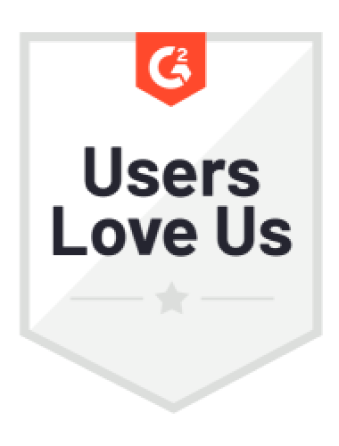Business Intelligence Tool Comparison: Mode Analytics vs. Sisense
Business intelligence (BI) tools have become essential in helping businesses make informed decisions and gain competitive advantages in today's data-driven landscape. Two popular BI tools that have garnered attention are Mode Analytics and Sisense. In this article, we will compare and evaluate these tools to help you determine which one is best suited for your business needs.
Understanding Business Intelligence Tools
The Role of Business Intelligence in Today's Business
In today's fast-paced business environment, data is being generated at an unprecedented rate. Business intelligence plays a crucial role in helping organizations make sense of this data, transforming it into actionable insights. It enables businesses to monitor key performance indicators, detect trends, analyze customer behavior, and make data-driven decisions.
Business intelligence tools have become indispensable for modern enterprises looking to gain a competitive edge in their respective industries. By leveraging these tools, organizations can harness the power of data to drive strategic decision-making, optimize operations, and enhance overall performance. The insights derived from business intelligence tools empower companies to identify opportunities for growth, mitigate risks, and stay ahead of market trends.
Key Features of Business Intelligence Tools
A powerful BI tool should offer a range of features to effectively analyze and visualize data. Some key features to consider are:
- Data integration: The ability to combine data from various sources into a single platform for seamless analysis.
- Report generation: The ability to create visually appealing and interactive reports for easy interpretation.
- Dashboard customization: The ability to tailor dashboards to specific user needs, providing relevant insights at a glance.
- Data exploration: The capability to explore data through drill-down capabilities, filters, and interactive visualizations.
Furthermore, advanced business intelligence tools are equipped with predictive analytics capabilities, allowing organizations to forecast future trends and outcomes based on historical data patterns. These predictive insights enable businesses to proactively adjust their strategies, anticipate market shifts, and capitalize on emerging opportunities. By harnessing the predictive power of business intelligence tools, companies can optimize resource allocation, streamline decision-making processes, and drive sustainable growth.
Introduction to Mode Analytics
Overview of Mode Analytics
Mode Analytics is a powerful and intuitive BI tool that empowers businesses to analyze data and collaborate effectively. Its user-friendly interface makes it accessible to both technical and non-technical users. Mode Analytics offers a comprehensive suite of features that caters to the needs of diverse teams within an organization.
Business Intelligence (BI) tools like Mode Analytics play a crucial role in helping organizations make informed decisions based on data-driven insights. With the increasing volume and complexity of data generated by businesses today, having a robust analytics platform is essential for staying competitive in the market. Mode Analytics stands out for its ability to streamline the data analysis process and provide actionable insights that drive business growth.
Unique Features of Mode Analytics
One distinctive feature of Mode Analytics is its SQL editor, which allows users to write and execute complex queries directly within the tool. This feature enables data analysts to perform intricate data transformations and calculations effortlessly. Additionally, Mode Analytics offers a collaborative environment where users can share and discuss insights, fostering a culture of data-driven decision-making.
Data collaboration is at the heart of Mode Analytics, allowing teams to work together seamlessly on projects and analyses. The platform's version control capabilities ensure that all changes made to queries or reports are tracked, providing transparency and accountability in the data analysis process. Furthermore, Mode Analytics' interactive visualizations make it easy for users to explore data trends and patterns, enabling them to derive meaningful conclusions from their analyses.
Introduction to Sisense
Overview of Sisense
Sisense is a robust Business Intelligence (BI) tool that has gained popularity for its exceptional capability to handle large and complex datasets. It prides itself on empowering users to extract valuable insights from their data efficiently. One of the key strengths of Sisense lies in its powerful data integration capabilities, which allow users to seamlessly connect and merge data from multiple sources. By offering a unified view of data, Sisense enables organizations to make informed decisions based on a comprehensive understanding of their information landscape.
Moreover, Sisense's intuitive drag-and-drop interface sets it apart as a user-friendly BI solution. This user-centric design empowers business users to create interactive dashboards and reports without the need for extensive technical knowledge or coding skills. By democratizing data analytics, Sisense enables organizations to foster a data-driven culture where insights are accessible to all stakeholders.
Unique Features of Sisense
Sisense distinguishes itself with its innovative In-Chip technology, a patented feature that revolutionizes the speed and efficiency of data analysis. By performing queries directly within the computer's memory, In-Chip technology accelerates data processing and ensures swift access to real-time insights. This capability is particularly valuable for organizations dealing with massive datasets, as it eliminates the delays commonly associated with traditional disk-based querying systems.
Additionally, Sisense's proprietary Elasticubes™ technology simplifies the data modeling process, offering a streamlined approach to transforming raw data into actionable intelligence. By providing a flexible and agile data modeling environment, Elasticubes™ empowers users to adapt quickly to changing business requirements and analytical needs. This dynamic modeling capability enhances the agility of organizations in responding to market trends and gaining a competitive edge through data-driven decision-making.
Comparing Mode Analytics and Sisense
User Interface Comparison
When comparing the user interfaces of Mode Analytics and Sisense, both tools offer intuitive and user-friendly experiences. However, Mode Analytics excels in providing a clean and minimalist interface, focusing on simplicity and ease of use. The interface is designed to eliminate distractions and allow users to focus solely on their data analysis tasks. With a sleek and modern design, Mode Analytics ensures that users can navigate through the platform effortlessly, enhancing their overall productivity.
On the other hand, Sisense stands out with its visually appealing drag-and-drop interface, enabling users to create customizable dashboards effortlessly. The interface is designed to be highly interactive, allowing users to manipulate and explore their data visually. With a wide range of widgets and visualization options, Sisense empowers users to create stunning and dynamic dashboards that effectively communicate insights to stakeholders.
Data Integration and Management
Both Mode Analytics and Sisense offer strong data integration capabilities, allowing users to connect to various data sources and combine them seamlessly. Mode Analytics provides a comprehensive set of connectors, enabling users to easily import data from databases, cloud storage, and third-party applications. The platform also supports scheduled data refreshes, ensuring that users always have access to the most up-to-date information.
However, Sisense's Elasticubes™ technology provides an edge in terms of data modeling and management. This feature simplifies the process of preparing and transforming data into a format suitable for analysis. With Elasticubes™, users can easily create data models by defining relationships between different data sources, performing data transformations, and aggregating data. This streamlined approach to data management allows users to spend less time on data preparation and more time on analysis and insights generation.
Reporting and Visualization Capabilities
Mode Analytics and Sisense offer robust reporting and visualization capabilities, enabling users to create interactive and visually appealing reports and dashboards. Mode Analytics excels in its SQL editor, allowing users to write custom queries to generate precise reports. The SQL editor provides advanced functionalities such as syntax highlighting, auto-completion, and query optimization, empowering users with the flexibility to tailor their reports to specific requirements.
On the other hand, Sisense offers a wide range of pre-built templates and widgets, simplifying the report creation process. Users can leverage these templates to quickly create professional-looking reports without the need for extensive design or coding skills. Additionally, Sisense's drag-and-drop interface enables users to easily arrange and customize visualizations, making it effortless to create compelling and informative dashboards.
Pricing Structure
When considering the pricing structure of Mode Analytics and Sisense, it is essential to evaluate your business requirements and budget. Mode Analytics offers a flexible pricing model based on user roles and usage, making it ideal for smaller teams or organizations with specific needs. The pricing model allows users to scale their usage as their needs evolve, ensuring cost-effectiveness and flexibility.
Sisense, on the other hand, operates on a per-user pricing model, making it suitable for larger organizations with extensive reporting and analysis requirements. The per-user pricing model provides transparency and predictability, allowing organizations to plan their budget accordingly. Additionally, Sisense offers enterprise-level features and support, ensuring that larger organizations have access to the necessary resources and assistance for their data analytics initiatives.
Pros and Cons of Mode Analytics and Sisense
Advantages of Mode Analytics
Mode Analytics' strengths lie in its user-friendly interface and collaborative features. Its simplicity and ease of use make it accessible to a wide range of users, while its collaborative environment promotes knowledge sharing and data-driven decision-making. Furthermore, Mode Analytics' built-in SQL editor provides advanced users with the flexibility to perform complex data manipulations.
Disadvantages of Mode Analytics
One drawback of Mode Analytics is its limited data modeling capabilities. While it offers strong data integration features, users may find it challenging to perform complex data transformations. Additionally, Mode Analytics' pricing structure may not be suitable for larger organizations with extensive reporting and analytical needs.
Advantages of Sisense
Sisense stands out with its powerful data integration capabilities and patented In-Chip technology. Its ability to handle large and complex datasets without sacrificing performance is a significant advantage for organizations dealing with vast amounts of data. Additionally, Sisense's drag-and-drop interface and extensive library of visualizations make it easy for business users to create visually appealing dashboards and reports.
Disadvantages of Sisense
While Sisense offers robust features, its learning curve may be steeper compared to Mode Analytics. The extensive capabilities and options in Sisense may require more technical expertise to fully utilize. Furthermore, Sisense's per-user pricing model may pose a challenge for organizations with a large number of users, resulting in higher costs.
In conclusion, both Mode Analytics and Sisense are powerful business intelligence tools with unique features and strengths. When choosing between the two, consider your organization's specific needs, budget, and user requirements. Mode Analytics' user-friendly interface and collaborative environment may be suitable for smaller teams looking for simplicity and ease of use. On the other hand, Sisense's robust data integration capabilities and performance handling large datasets make it a strong contender for larger organizations with extensive analytical requirements. Take the time to evaluate your business needs and test both tools to determine which one aligns best with your goals.
As you consider the best business intelligence tool for your organization, remember that the journey doesn't end with data analysis. Effective data governance and management are crucial for maximizing the value of your BI tool. CastorDoc offers a seamless solution that integrates advanced governance, cataloging, and lineage capabilities with a user-friendly AI assistant, enhancing your team's ability to engage in self-service analytics. Whether you're a data professional seeking comprehensive control or a business user desiring accessible insights, CastorDoc is designed to support your strategic goals. Elevate your data management experience and empower informed decision-making with CastorDoc. Check out more tools comparisons here and discover how CastorDoc can complement your business intelligence efforts.
You might also like
Get in Touch to Learn More



“[I like] The easy to use interface and the speed of finding the relevant assets that you're looking for in your database. I also really enjoy the score given to each table, [which] lets you prioritize the results of your queries by how often certain data is used.” - Michal P., Head of Data




.png)
%202.png)

%202.png)

%202.png)
%202.png)
%202.png)

%202.png)


%202.png)

%202.png)


.png)

